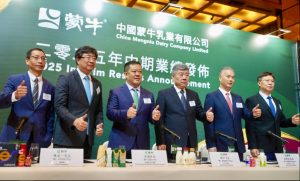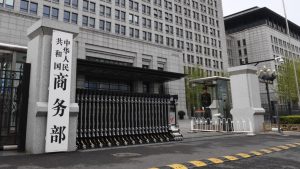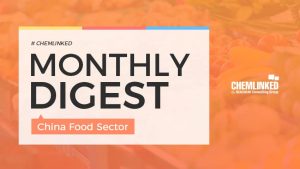
According to the US Department of Agriculture, the country is on track to hold 69 per cent of the world’s corn reserves, 60 per cent of its rice and 51 per cent of its wheat by the end of this year.
Chinese customs data shows rice imports alone surged 53 per cent last year, while overseas purchases of wheat shot up by 50 per cent.
Reports have suggested this aggressive stockpiling has been pushing up the price of global commodities at a time when food insecurity is on the rise.
For President Xi Jinping, feeding a population of 1.4 billion people has always been a political juggling act.
China has 20 per cent of the world’s population, but only 7 per cent of the world’s arable landmass.
Vast swathes of the country are unable to produce food, partly down to China’s pollution problem.
The country is renowned for its smoggy cities and for emitting more greenhouse gases than any other place on the planet.
But it does not just have an emissions problem. Soil and water pollution have reduced cultivation land from 19 per cent in 2010, to 13 per cent in 2020.
China does, however, grow 95 per cent of its wheat and rice needs and has a wheat yield almost 50 per cent higher per hectare than the US, through efficient production.
But the shortfall still makes it one the world’s largest wheat importers.
President Xi – a leader who is acutely aware that many people in his generation still remember what it feels like to go hungry – has said China’s new policy is to achieve ‘self-reliance’.
In May, he said: “In the future, the demand for food will continue to increase, and the balance between supply and demand will become tighter.”
One area where he has not yet managed to achieve self-reliance, though, is in soya.
China imports 120 million tonnes of soya beans annually, almost the size of the US crop and 62 per cent of all soybean global trade, to feed its porcine industry as it is the world’s largest pork consumer.
But work is already underway to boost Chinese soybean production, with output expected to rise this year.
Releasing its 14th five-year plan on crop farming in January, the Ministry of Agriculture and Rural Affairs set a goal to produce about 23mt of soybeans by the end of 2025, up 40 per cent from current output levels.
The country also leased 4m hectares of land from Ukraine for 50 years in 2013 for wheat and barley production.
Quietly, China has invested in land, farms and dairies in Australia and New Zealand too, spreading its influence across the globe.
At home, the Chinese Government is offering farmers a minimum price for their crops – some of which will be stockpiled.
According to online stock exchange Nasdaq, China raised the minimum purchasing price for wheat in 2021 and 2022 – for the first time since 2014. It is now set at £274.83 (2,300 yuan) per tonne, up from £270.05 (2,260 yuan) in 2021.
These price increases sit alongside a plan to develop the Chinese seed industry.
Earlier this year, at a visit to the Yazhou Bay Seed Laboratory in the southern island of Hainan, President Xi said: “Only by holding Chinese seeds tightly with our own hands can we stabilise the Chinese food bowl and achieve food security.”
He believes seed sources must be independent and controllable, and seed industry technology self-reliant, which is why China recently enlarged its list of state-sponsored seed breeding and production bases for the first time since 2013.
The Government hopes the national bases will supply more than 80 per cent of the seeds needed for crop production by 2025, up from more than 70 per cent in the 2016-2020 period.



















